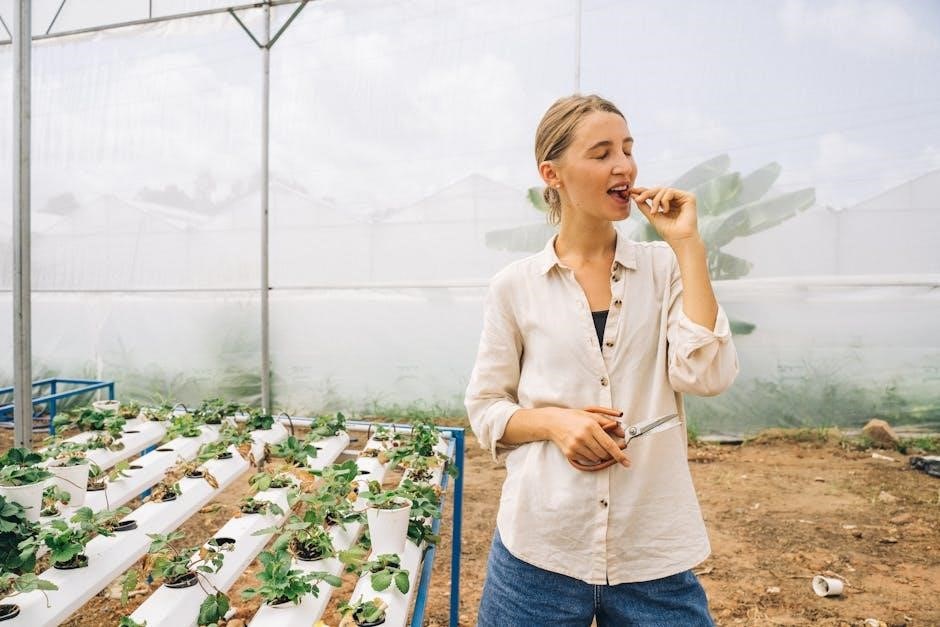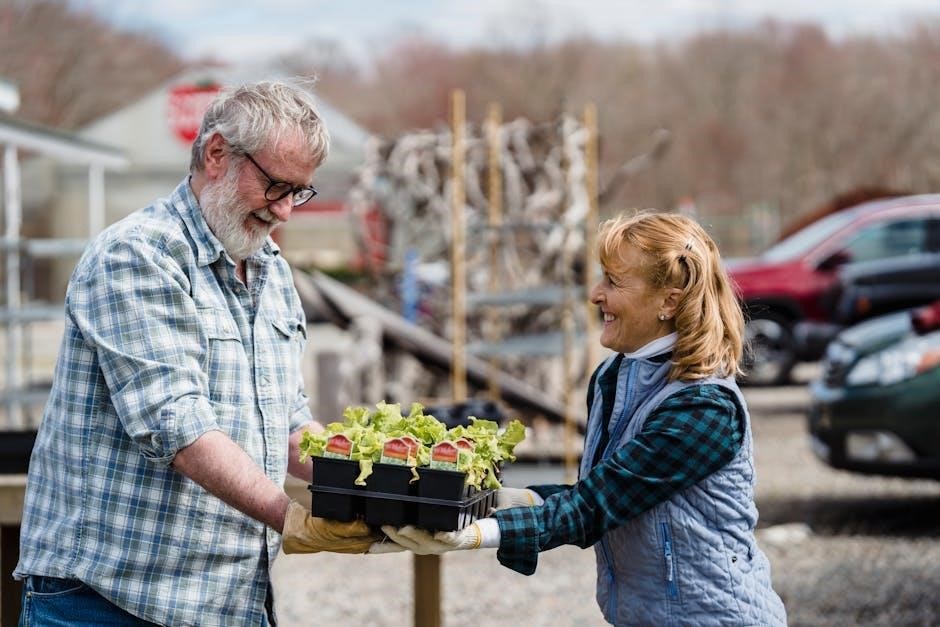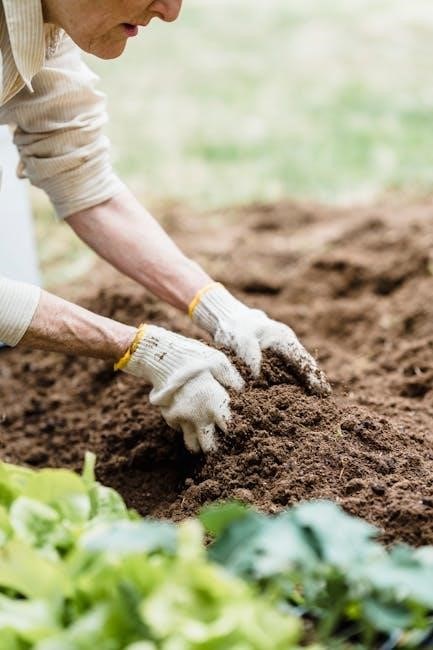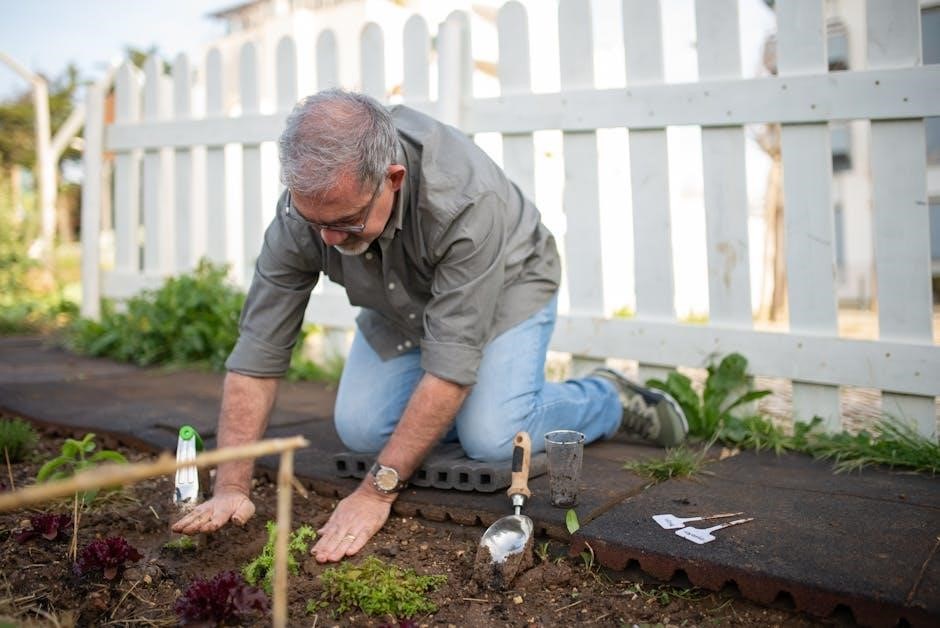Companion Planting Vegetables Chart PDF: A Comprehensive Guide
Discover the art of companion planting! This comprehensive guide helps gardeners understand which vegetables thrive together. A companion planting vegetables chart PDF offers a quick, easy reference for optimizing garden layouts. Learn to deter pests, attract pollinators, and boost yields by strategically pairing plants.
What is Companion Planting?
Companion planting is the practice of strategically placing different plant species in close proximity to enhance growth, deter pests, or provide other beneficial interactions. It’s a time-honored gardening technique that leverages the natural relationships between plants; The goal is to create a more balanced and productive ecosystem within your garden. This involves carefully considering which plants benefit each other and which may hinder growth when planted together;
Understanding these relationships can lead to healthier plants, reduced reliance on chemical pesticides, and increased yields. For example, certain plants may attract beneficial insects that prey on pests, while others may release compounds that repel unwanted insects. Tall plants can provide shade for sun-sensitive crops, and nitrogen-fixing plants can enrich the soil for heavy feeders. Companion planting is not just about placing plants randomly; it requires careful planning and observation to achieve the desired results. It’s about creating a synergistic environment where plants support each other, leading to a thriving and sustainable garden.
Benefits of Companion Planting
Companion planting offers a multitude of advantages for both the gardener and the garden ecosystem. One of the primary benefits is natural pest control. Certain plants repel harmful insects, reducing the need for chemical pesticides. For example, marigolds deter nematodes and other pests that attack vegetable roots. Similarly, some plants attract beneficial insects like ladybugs and lacewings, which prey on aphids and other garden pests. This creates a more balanced and sustainable approach to pest management.
Another significant benefit is improved pollination. Planting flowers alongside vegetables can attract pollinators like bees and butterflies, leading to increased fruit and vegetable production. Furthermore, companion planting can enhance nutrient availability in the soil. Legumes, such as beans and peas, fix nitrogen in the soil, benefiting nearby plants that require this essential nutrient. Additionally, some plants can provide physical support or shade for others, creating a more favorable growing environment. Companion planting promotes biodiversity and enhances the overall health and resilience of your garden.
Vegetable Companion Planting Chart: Good Companions
A vegetable companion planting chart is an invaluable tool for gardeners seeking to maximize their yields and create a thriving garden ecosystem. This chart outlines beneficial plant pairings, where growing certain vegetables together enhances their growth, health, and overall productivity. For instance, basil is a great companion for tomatoes, improving their flavor and repelling pests like tomato hornworms and whiteflies. Carrots and onions also make excellent companions, as the onion’s pungent aroma deters carrot root flies, while carrots repel onion flies.

Beans, being nitrogen fixers, are good companions for many vegetables, enriching the soil and benefiting heavy feeders like corn and cabbage. Marigolds are another versatile companion plant, deterring nematodes and other soil pests that can harm a wide range of vegetables. Lettuce thrives when planted near beets, while rosemary helps to deter cabbage flies from brassicas. By consulting a vegetable companion planting chart, gardeners can strategically select plant combinations that promote synergistic relationships, leading to healthier, more productive gardens with reduced reliance on chemical interventions.

Vegetable Companion Planting Chart: Bad Companions
A vegetable companion planting chart isn’t just about good pairings; it’s equally crucial to understand which plants should be kept apart. Certain vegetables, when grown in close proximity, can hinder each other’s growth, attract pests, or compete for resources. For example, beans and onions are generally considered bad companions, as onions can inhibit the growth of beans. Similarly, cabbage and strawberries should not be planted together, as they can negatively impact each other’s development.
Fennel is known to be an allelopathic plant, meaning it releases chemicals that can inhibit the growth of many other vegetables, making it a poor companion for most garden plants. Additionally, avoid planting tomatoes near brassicas like cabbage, broccoli, and cauliflower, as they can attract similar pests and diseases. By consulting a vegetable companion planting chart, gardeners can avoid these detrimental pairings and ensure that their plants have the best possible chance to thrive. Recognizing incompatible plant combinations is key to preventing problems and maximizing garden success.

Herbs as Companion Plants
Herbs play a vital role in companion planting, offering numerous benefits to vegetable gardens. Many herbs possess strong scents that deter pests, protecting vulnerable crops from damage; Basil, for instance, is an excellent companion for tomatoes, repelling pests like tomato hornworms and whiteflies, while also improving the tomato’s flavor. Rosemary can deter cabbage moths and bean beetles, safeguarding brassicas and beans from infestation.

Chives are known to repel aphids and Japanese beetles, making them a valuable addition to gardens with susceptible plants. Furthermore, certain herbs attract beneficial insects, such as pollinators and predatory insects, which contribute to a healthy garden ecosystem. Dill attracts hoverflies and ladybugs, both of which prey on aphids and other harmful pests. By strategically incorporating herbs into vegetable gardens, gardeners can create a natural and effective pest control system, reducing the need for chemical interventions and promoting overall plant health. Consulting a companion planting chart can help determine the best herb pairings for specific vegetables.
Flowers as Companion Plants
Flowers, beyond their aesthetic appeal, serve as powerful allies in the vegetable garden through companion planting. Many flowers attract beneficial insects, acting as magnets for pollinators like bees and butterflies, which are crucial for vegetable production. Marigolds are renowned for repelling nematodes and other soil-borne pests, safeguarding the roots of nearby vegetables. Nasturtiums act as trap crops, drawing aphids away from valuable plants like tomatoes and beans, sacrificing themselves to protect their companions.
Sunflowers can provide shade for heat-sensitive vegetables, preventing sunscald and promoting healthy growth. Borage attracts pollinators and repels tomato hornworms, making it a valuable companion for tomato plants. Furthermore, certain flowers release compounds into the soil that can benefit neighboring vegetables. By strategically incorporating flowers into vegetable gardens, gardeners can enhance pollination, deter pests, and improve overall plant health. A comprehensive companion planting chart can guide gardeners in selecting the most beneficial flower pairings for their specific vegetable crops, maximizing the advantages of this natural gardening technique.
Specific Vegetable Companion Planting Examples: Tomatoes
Tomatoes, a garden staple, benefit significantly from companion planting. Basil is a classic companion, believed to improve tomato flavor and repel pests like tomato hornworms and whiteflies. Marigolds are another excellent choice, their scent deterring nematodes and other harmful soil-borne pests. Carrots, planted nearby, can improve soil structure, benefiting tomato root systems. Garlic and onions are also effective pest deterrents, helping to keep aphids and other insects away from tomato plants.
Conversely, some plants are detrimental to tomatoes; Members of the brassica family, such as cabbage and broccoli, can inhibit tomato growth. Fennel should also be avoided, as it can attract harmful pests. Corn can compete with tomatoes for nutrients and sunlight, hindering their development. By carefully selecting companion plants, gardeners can create a thriving ecosystem around their tomatoes, promoting healthy growth, deterring pests, and enhancing the overall yield. Consulting a companion planting chart is crucial for making informed decisions about which plants to pair with tomatoes.
Specific Vegetable Companion Planting Examples: Beans
Beans, known for their nitrogen-fixing abilities, are excellent companions for many vegetables. Carrots thrive alongside beans, with the beans improving the soil and the carrots deterring bean beetles. Cucumbers also benefit from being planted near beans, as the beans provide shade and support for the cucumber vines. Marigolds can help deter bean beetles and other pests, while rosemary helps deter cabbage flies, indirectly benefiting beans.
However, some plants are not compatible with beans. Members of the allium family, such as garlic and onions, can inhibit bean growth. Fennel should also be avoided as it attracts harmful pests. Beets are also considered bad companions for beans. Sunflowers compete with beans for sunlight and nutrients, hindering their development. By carefully selecting companion plants, gardeners can create a supportive environment for their beans, promoting healthy growth, deterring pests, and maximizing yields. Always consult a companion planting chart for specific guidance tailored to your garden.
Creating Your Own Companion Planting Chart
Crafting a personalized companion planting chart is an excellent way to tailor gardening practices to your specific environment and preferences. Start by listing the vegetables you plan to grow, then research their known companion plants and incompatible neighbors. Consult existing charts and gardening resources, but remember that local conditions can influence plant interactions.
Dedicate space in your chart to record observations each growing season. Note plant health, pest presence, and overall yield for different combinations. Over time, this data will reveal which pairings work best in your garden. Include sections for herbs and flowers, as these can attract beneficial insects or deter pests. Be mindful of plant spacing and growth habits to prevent competition for sunlight and nutrients. Regularly update your chart with new findings and adjust your planting strategies accordingly. This iterative process will help you create a highly effective and personalized guide to companion planting success.
